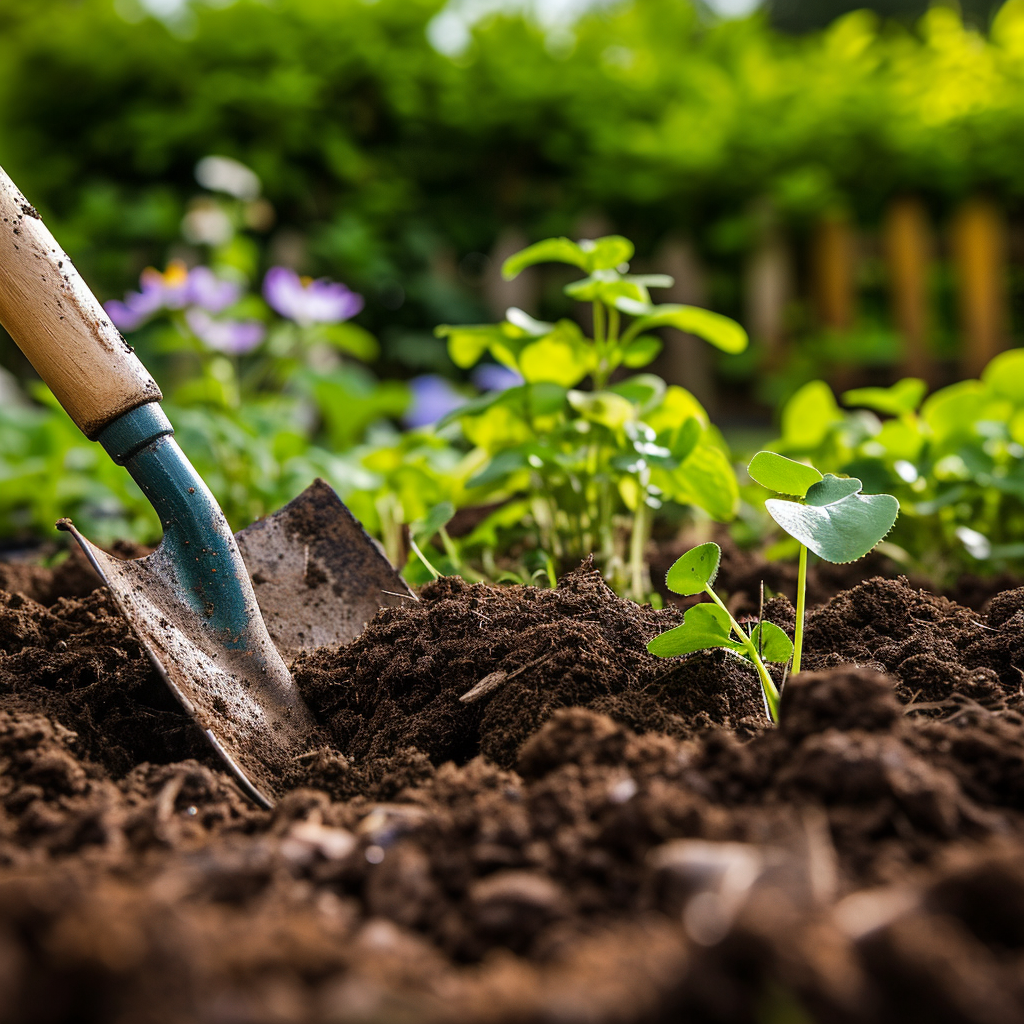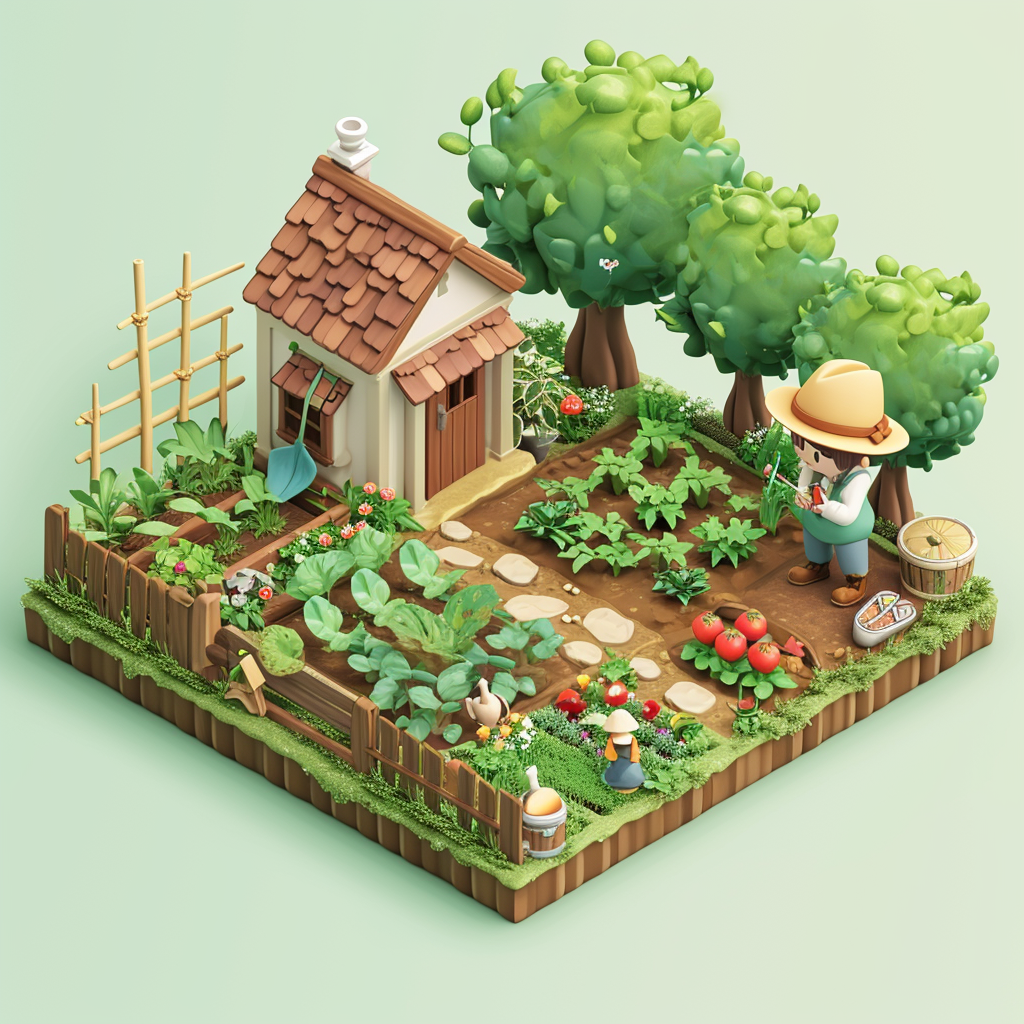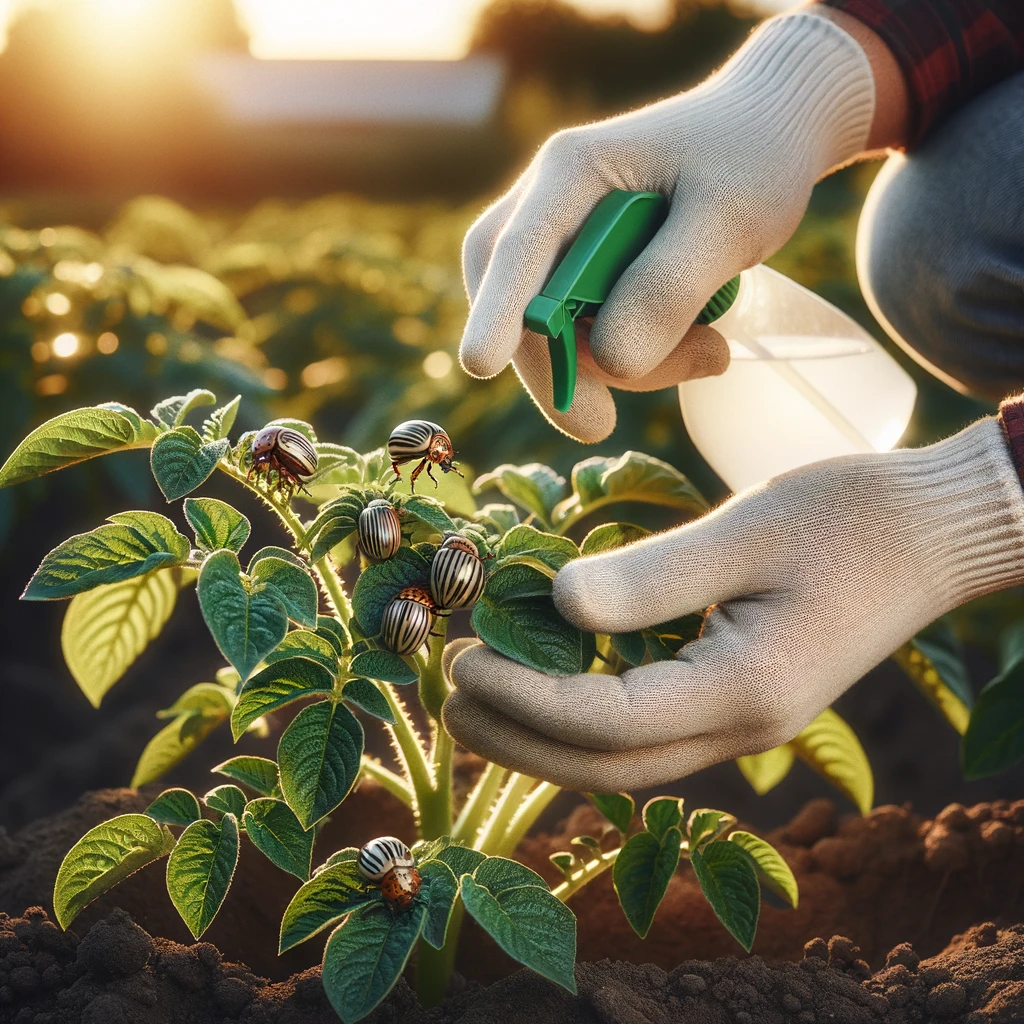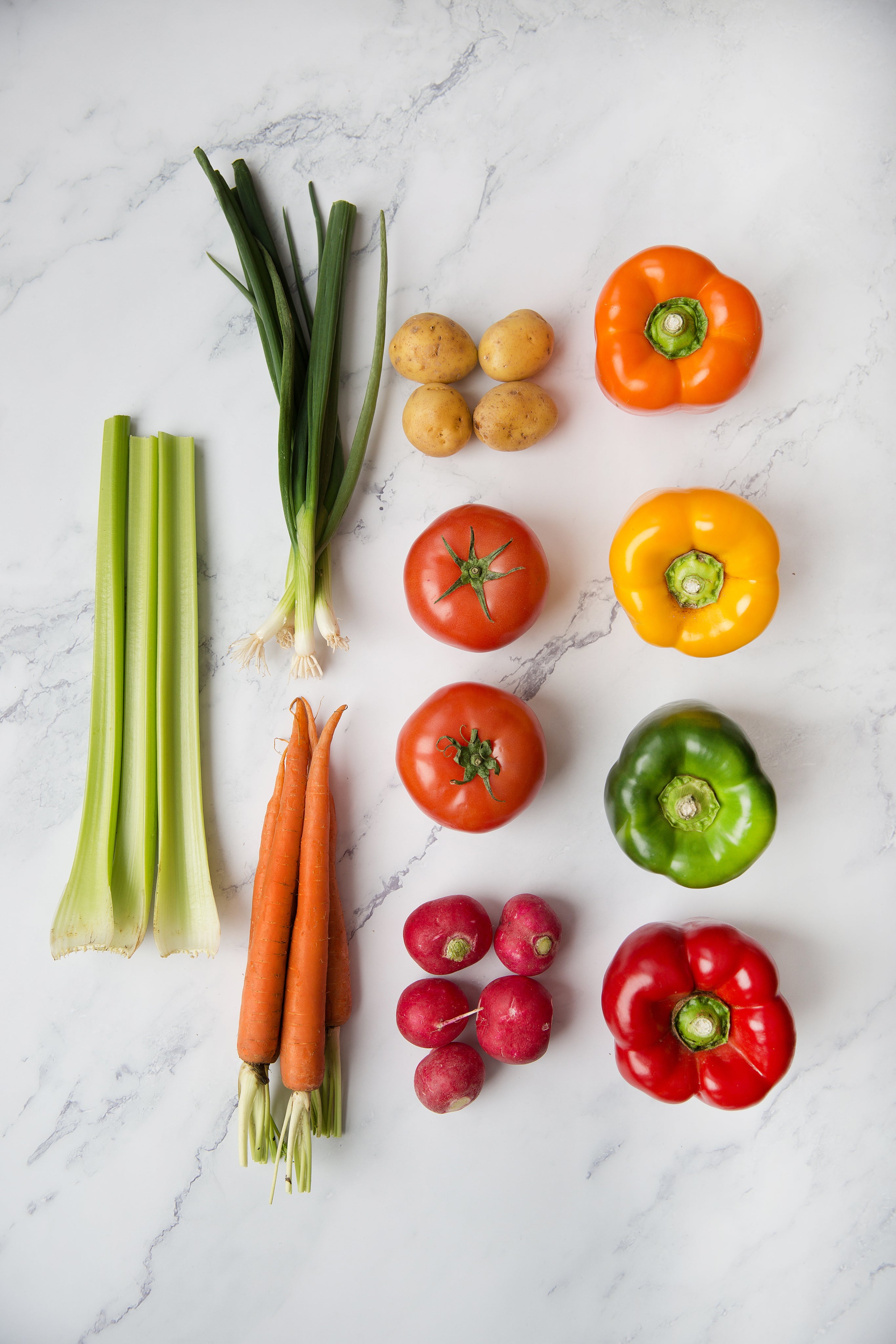Every gardener knows: Good soil is essential for healthy plants and a bountiful harvest. But how do you find the right soil for your vegetables, herbs and ornamental plants? In this article you will learn everything you need to know about choosing the right soil and how you can optimally adapt it to the needs of your green favorites.
Basic knowledge of soil and soil: More than just dirt

When we talk about gardening, we often think about plants, seeds, and watering. But the heart of any garden is something we sometimes overlook: the soil . Soil is much more than just the dirt beneath our feet – it is the life-giving medium that nourishes, supports and grows our plants.
But what makes good soil? Essentially, garden soil is made up of a mixture of different minerals, organic matter, air and water. These components determine the texture and fertility of the soil. The three main types of soil are sand , loam and clay , which differ in particle size. Sandy soils have large particles and are well-drained, while clayey soils have very small particles and retain water well. Loamy soils lie in between and are often ideal for most plants as they offer a good balance of water retention and drainage.
The structure of the soil is also crucial. A healthy soil structure allows for good air circulation and water permeability , which in turn is important for root health and plant growth. Compacted soil can cause problems because it limits air and water permeability.
Another important aspect is the organic matter content in the soil. This comes from dead plants and animals and is decomposed by microorganisms in the soil. This organic matter is crucial to soil fertility as it provides nutrients and helps retain water and air in the soil.
Finally, soil pH is a key factor. It affects how well plants can absorb nutrients from the soil. Most vegetable plants prefer a pH between 6 and 7.5, which is slightly acidic to neutral. If the soil is too acidic or too alkaline, it can affect plant growth.
Overall, soil is a complex and living ecosystem. Proper care and knowledge of the soil are crucial to success in the garden. By understanding the different soil types and their properties, you can create the ideal environment for your plants and help them thrive and grow.
How do I determine the right soil for different types of plants such as vegetables, herbs or ornamentals?

Every plant has its own specific requirements for the soil in which it grows. Choosing the right soil is therefore a crucial step in making your garden bloom. Here is a small list of the most common vegetables and their soil requirements:
Tomatoes: Rich in humus, slightly acidic, good drainage
Carrots: Loose, sandy, deep for straight roots
Lettuce: Nutrient-rich, moisture-retaining, well-draining
Zucchini: Rich in organic matter, evenly moist
Beans: Slightly acidic to neutral, well drained, rich in organic matter
Peppers/chilli: Moist, nutrient-rich, well ventilated
Potatoes: Deep, loose, nutrient-rich, well-draining
Cucumbers: Nutrient-rich, moist, well-draining
When it comes to herbs, the requirements are often different. Many herbs, such as thyme or rosemary, prefer dry, well-drained soil. Excessive moisture can quickly cause root rot in such plants.
Basil: Moist, nutrient-rich, well-drained
Thyme: Dry, well-drained, rather lean
Rosemary: Well drained, dry, not too nutrient dense
Parsley: Moist, nutrient-rich, loose
Sage: Dry to moderately moist, well-drained, low in nutrients
Mint: Moist, nutrient-rich, grows in almost any type of soil
For ornamental plants, the need varies enormously depending on the species. It is important to research the specific needs of each ornamental plant before planting.
Regardless of the type of plant, good soil structure is crucial. It should be able to store moisture as well as drain excess water. A mixture of high-quality potting soil, compost and, if necessary, sand or perlite can improve soil quality for most plant species.
Remember that even the best soil loses nutrients over time. Regular soil testing and enrichment with compost or organic fertilizer can help keep the soil fertile and healthy.
What role does the pH value of the soil play and how can I adapt it to the needs of my plants?

Soil pH is a crucial factor in the growth and health of your plants. It measures how acidic or basic your soil is on a scale from 0 (very acidic) to 14 (very basic), with 7 being neutral. Most garden plants prefer a pH value between 6 (slightly acidic) and 7.5 (slightly basic).
Improper pH can cause plants to be unable to absorb necessary nutrients from the soil, even if those nutrients are present. For example, if the soil is too acidic, certain nutrients such as nitrogen, phosphorus and potassium may be difficult for plants to access.
To test the pH of the soil, you can use a soil pH test kit from a garden supply store. These tests are easy to carry out and give you a good overview of the condition of your soil.
If your soil's pH needs to be adjusted, there are several methods. To make soil that is too acidic less acidic, you can add garden lime . Lime increases the pH and makes the soil more alkaline. For soils that are too basic, acidic organic materials such as peat or specially formulated soil acids are suitable to lower the pH value.
It is important to make pH changes gradually and test regularly to avoid the soil becoming too acidic or too alkaline. A sudden change can do more harm than good to plants. Patience and constant adjustments are the key to balanced soil pH.
Can I improve my soil, and if so, how?

The answer is a resounding yes! Improving soil quality is an essential step to ensure healthy plants and a bountiful harvest. Here are some methods you can use to improve the quality of your soil:
Composting: Compost is like a miracle cure for the soil. It improves the structure, promotes the supply of nutrients and stimulates soil life. You can make your own compost from kitchen waste, garden waste and other organic materials. Regularly adding compost to your garden soil can work wonders.
Green manure: Introducing green manure plants such as clover, lupins or phacelia helps to loosen the soil and increase its fertility. These plants fix nitrogen from the air and put it into the soil. After the plants die, the nitrogen is made available to the other plants.
Mulching: A layer of mulch on the ground retains moisture, suppresses weeds, and adds nutrients to the soil as it decomposes. Organic mulching materials such as chopped leaves, straw or wood chips are ideal for this.
Soil aeration: Especially when the soil is compacted, it is important to loosen it regularly. This improves ventilation and water flow. Gentle soil cultivation without destroying the structure too much is recommended here.
Mineral additives: Sometimes the soil requires additional minerals such as lime, rock powder or special mineral mixtures. These can help compensate for deficiencies and improve plant growth.
Regular soil analyzes: In order to really know what your soil needs, regular soil analyzes make sense. They show you which nutrients are missing or in excess.
By combining these methods, you can significantly improve the quality of your soil and thus create the best conditions for your plants.
What do I need to consider when selecting soil for container and raised beds?

Choosing the right soil for container and raised beds is crucial to the success of your plants. This type of gardening has special requirements because the roots of the plants are confined to a limited space. Here are some important points to keep in mind:
Good drainage: Good drainage is essential in containers and raised beds to avoid waterlogging and root rot. Choose soil that is light, loose and well-draining, perhaps with added perlite or coarse sand.
Nutrient-rich soil: Since the roots grow in a limited space, it is important that the soil is nutrient-rich. A mixture of high-quality garden soil, compost and organic fertilizer provides a good basis.
pH: Make sure the pH of the soil is appropriate for the specific plants you want to grow. This is particularly important in containers as the pH can change more quickly here than in open ground.
Soil Renewal: The soil in containers and raised beds should be replaced or refreshed regularly as it loses nutrients over time. Annual renewal or enrichment with compost and fertilizer helps keep the soil quality high.
Avoid soil compaction: Be careful not to compact the soil in your containers and raised beds. Light loosening can help improve air circulation and promote root growth.
By paying attention to these points, you can ensure that your plants in containers and raised beds have optimal growing conditions and thrive healthy and strong.
Conclusion
Choosing the right soil and understanding its properties are fundamental elements of successful gardening. Whether you're growing vegetables, herbs, or ornamentals, each plant has its own specific needs when it comes to the soil. By choosing the right soil for your plants, adjusting its pH and improving it if necessary, you create the best conditions for healthy growth and a bountiful harvest.
Don’t forget that container and raised beds also place special demands on the soil. By choosing suitable soil and regular care, you ensure that your plants can thrive even in a limited space.
Gardening is not just planting and watering. It is an art that requires patience, love for nature and a good understanding of the needs of your plants. With the right knowledge about soil and soil, you can support this wonderful process and make your green paradise bloom. Break out the shovel and gloves - it's time to give your garden its best!






